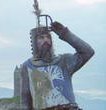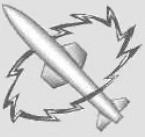Don Bowen
Posts: 8183
Joined: 7/13/2000
From: Georgetown, Texas, USA
Status: offline

|
quote:
ORIGINAL: JeffK
A major group of Land Units missing are the Australian Armoured/Motorised Divisions.
1st Armoured Division AIF at 7 Dec 1941
2/11 Armd Car Rgt
16 Fd Rgt
108 AT Rgt
1 Armoured Bde (Greta, nr Newcastle, NSW)
2/5, 2/6 & 2/7 Armoured Rgts
2 Armoured Bde – Vic
2/8, 2/9 & 2/11 Armoured Rgts
At the end of 1941, 2 Cavalry Division became 2 Motor Division
6 Armoured Bde
12, 13 & 14 Armoured Rgts
3 Motor Bde
4,26 & 101 Mot Rgts
& 6 Arm Car Rgt(probably a Motor Bn at this point)
As at 9/42
1 Arm Div – 1 Arm Bde (2/5, 2/7 & 2/10 Arm Rgt) disbanded 7/1/44. 3 Motor Bde (4,26 & 101 Mot Rgt) disbanded 4/43. 2/11 Arm Car Rgt
2 Arm Div – 6 Arm Bde (12,13 & 14 Arm Rgt, 9 Mot Rgt) 2 Motor Bde (15,17 & 20 Motor Rgt) 6 Arm Car Rgt Div disbanded 2/43.
3 Arm Div – 2 Arm Bde (2/4, 2/8 & 2/9 Arm Rgt) 1 Motor Bde (5,11 & 16 Motor Rgt) disbanded 3/7/43 12 Arm Car Rgt
3 Army Tank Bde – 1,2 & 3 Army Tank Bn Bde disbanded 26/9/43, 1 Bn in late 44, 2 Bn 3/44
4 Arm Bde – 1 AT Bn, 2/6 Arm Rgt & 2/9 Arm Rgt (formed in mid 43??)
While some of these are portrayed as independent Armoured Bns, having 3 Heavy, Armoured Divisions on hand would help to put off any untoward movements by the Japanese.
There are a number of points here.
Australian never fielded a complete armoured division and, in fact, barely a complete Brigade. The handful of Armoured Regiments (Battalion sized units) were frequently moved between various command organizations. Only Regiment or smaller sized units ever went into action. In CHS, only the Battalion level units are implemented and they give a reasonably accurate picture of the true armoured strength.
The 1st Armoured Division was never fully formed. A structure for a 2-Brigade, fully Armoured Division was laid out prior to Dec/41 with the intention of its use in North Africa. Tanks were not yet available and, once the AIF was concentrated in the Pacific, all thoughts of using 1st Armoured in Africa were abandoned. There was insufficient need for large armoured formation in the Pacific to justify 1st Armoured and it never fielded a complete division. It became “Mixed”, with only a single Armoured Brigade plus a Motor Brigade transferred from one of the Cavalry Regiments.
2nd Armoured was a conversion of 2nd Cavalry and was to be a British-style mixed Division - one armoured Brigade and one Lorried Infantry Brigade. It was never fully converted and, as you say, was disbanded. It was briefly designated 2nd Motor Division between being “Cavalry” and “Armoured”. It’s Armoured Brigade was the converted 6th Cavalry Brigade and it’s Motorized Brigade the converted 3rd Cavalry Brigade.
3rd Armoured was a partial redesignation of 1st Cavalry and was barely begun, then partially disbanded. By the time 3rd Armoured was formed all of the Armoured Divisions had become Mixed. The Armoured Brigade in 3rd Armoured had originally been in 1st Armoured and the Motor Brigade in 1st Cavalry. 3rd Armoured was just a new command organization over existing units.
3rd Army Tank Brigade was a command organization set up over three of the Australian Army (i.e. non-AIF) independent tank Battalions. It was purely administrative and was disbanded in 1943. It’s battalions were either transferred to other Brigades or became independent.
4th Armoured Brigade was a command organization formed around the time of the disbanding of 2nd Armoured Division and contained no new units. The unit listed above as “1st AT Bn” was 1st Army Tank Battalion and not an anti-tank unit.
The December 7th authorized strength for Australian Armoured was 10 battalions, with insufficient tanks for a single company (Squadron). Note that a British-style armoured regiment was actually battalion sized, with three company sized units (called Squadrons).
1st thru 4th Army Tank Battalions were assigned to the Australian Army (non-AIF) – not all yet formed.
2/5 thru 2/10 were assigned to the 1st Armoured Division (but had no tanks).
11th was an Armoured Car regiment that was later renamed 2/11th.
12th thru 14th were conversions of Light Horse Regiments and a redesignation of one tank battalion.
Also some of the remaining Light Horse regiments were converted into light arourmed reconnaissance units – primarily armoured cars and Bren Carriers.
The 4th Tank Battalion went through a series of re-designations and ended up as the 14th Armoured regiment in the 6th Brigade, 2nd Cavalry. A new 2/4 Regiment was formed from existing reconnaissance units.
The units numbered 1 thru 10 represented the effective strength and CHS includes 8 of them. Some units remained in rear areas throughout the war and were never combat effective – functioning primarily as training/reserve units. Australia had considerable difficulty filling out the units that were authorized, both in terms of equipment and trained personnel, and never actually achieved it’s paper strength.
We did a thorough review of the Australian Tank Corps some time ago and selected units to represent it’s actual strength (with special attention to units that actually entered combat). I just do not feel that any additional units are warranted.
If there is an area that needs work it is the 4th Army Tank Battalion and 2/4th Armoured Regiment. These are the same unit, redesignated. We originally had another unit (2/5 if I recall) but changed it to 2/4 at the last minute due to that unit’s service in New Guinea. A change of name of one of these units might be more accurate but would have no affect on the available strength.
|
 Printable Version
Printable Version


















 New Messages
New Messages No New Messages
No New Messages Hot Topic w/ New Messages
Hot Topic w/ New Messages Hot Topic w/o New Messages
Hot Topic w/o New Messages Locked w/ New Messages
Locked w/ New Messages Locked w/o New Messages
Locked w/o New Messages Post New Thread
Post New Thread